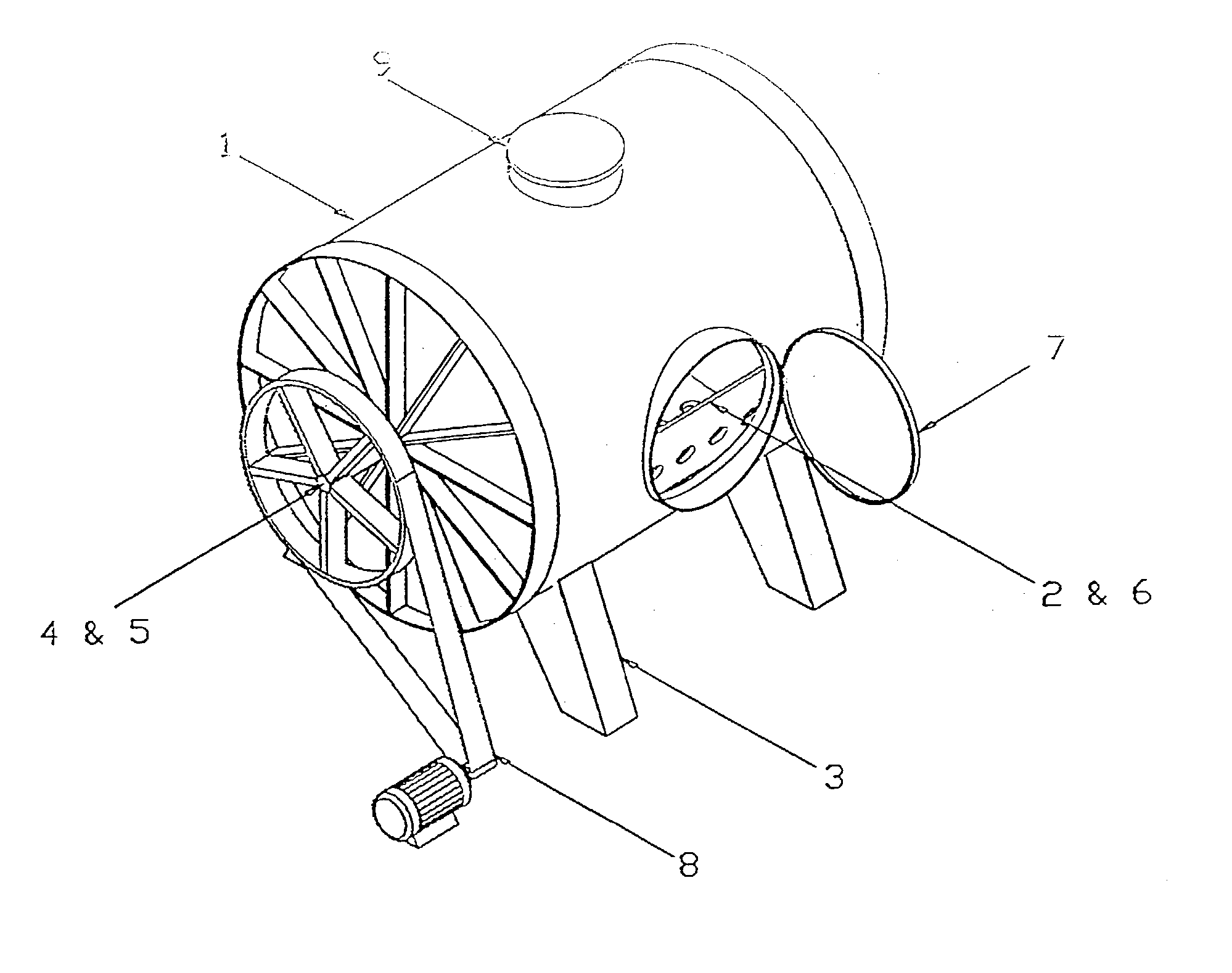Device for leather processing
- Summary
- Abstract
- Description
- Claims
- Application Information
AI Technical Summary
Benefits of technology
Problems solved by technology
Method used
Image
Examples
example 2
[0127] EXAMPLE 2
[0128] 54 kgs of shaved weight wet blue where taken in the stainless steel vessel having two perforated compartments. The perforated dummy door both made of stainless steel, and the dome shaped cap of the vessel where then closed by using cam assembly installed in the device. The leak-proof material used for the vessel as spongy rubber. Water, measuring 50 Lt., was added to the vessel through the inlet for washing operation by adding 130 grams of formic acid and run for 30 minutes. After that the water was drained out by just opening the outlet. The rotary and oscillatory mechanism of the vessel was then switched on one by one. The drive in respect of the oscillatory and rotary motions of the vessel was drawn by the cam mechanism and gearbox unit respectively. The direction of rotation of the vessel changed for every 10 minutes to upward and downward automatically by timer controlled system for easy mixing of chemicals with the water for quickening the process.
[0129]...
example 3
[0132] 185 Kgs assorted crust as taken in the stainless steel vessel having thee perforated compartments. The dome shaped cap with the perforated dummy door made of fibre glass reinforced polymer of the vessel was then closed by using rack and pinion mechanism installed in the device. The leak-proof material used for the vessel was nytrile rubber. Water, measuring 200 Lts., was added to the vessel through the inlet for wetback operation by adding 1.5 kgs of wetting agent and 600 grains of ammonia. The rotary and oscillatory mechanisms of the vessel were then switched on one by one. The vessel containing the leather started oscillating at 4 opm and rotating at 6 rpm with the help of the nytrile rubber rollers mounted on the cast iron connecting shafts. The drive in respect of the oscillatory and rotary motions of the vessel was drawn by the spatial mechanism and belt drive respectively. The direction of rotation of the vessel changed for every 10 minutes to upward and downward automa...
example 4
[0134] 150 kgs of shaved weight wet blue were taken in the seasoned wood vessel having two perforated compartments. The dome shaped cap with the perforated dummy door of the vessel, made of stainless steel were then closed by using rack and pinion assembly installed in the device. The leak-proof material used for the vessel was spongy rubber. Water (150 Lt.) was added to the vessel through the inlet for washing operation by adding 400 grains of formic acid. After 30 minutes the device was switched off and kept the vessel in such a position that the outlet was opened and faced downward thereby letting the water out by gravity. Then the outlet was closed.
[0135] The rotary and oscillatory mechanisms of the vessel were then switched on one by one. The drive in respect of the oscillatory and rotary motions of the vessel was drawn by the hydraulic system and gearbox unit respectively. The direction of rotation of the vessel changed for every 10 minutes to upward and downward automatically...
PUM
 Login to View More
Login to View More Abstract
Description
Claims
Application Information
 Login to View More
Login to View More - R&D
- Intellectual Property
- Life Sciences
- Materials
- Tech Scout
- Unparalleled Data Quality
- Higher Quality Content
- 60% Fewer Hallucinations
Browse by: Latest US Patents, China's latest patents, Technical Efficacy Thesaurus, Application Domain, Technology Topic, Popular Technical Reports.
© 2025 PatSnap. All rights reserved.Legal|Privacy policy|Modern Slavery Act Transparency Statement|Sitemap|About US| Contact US: help@patsnap.com



